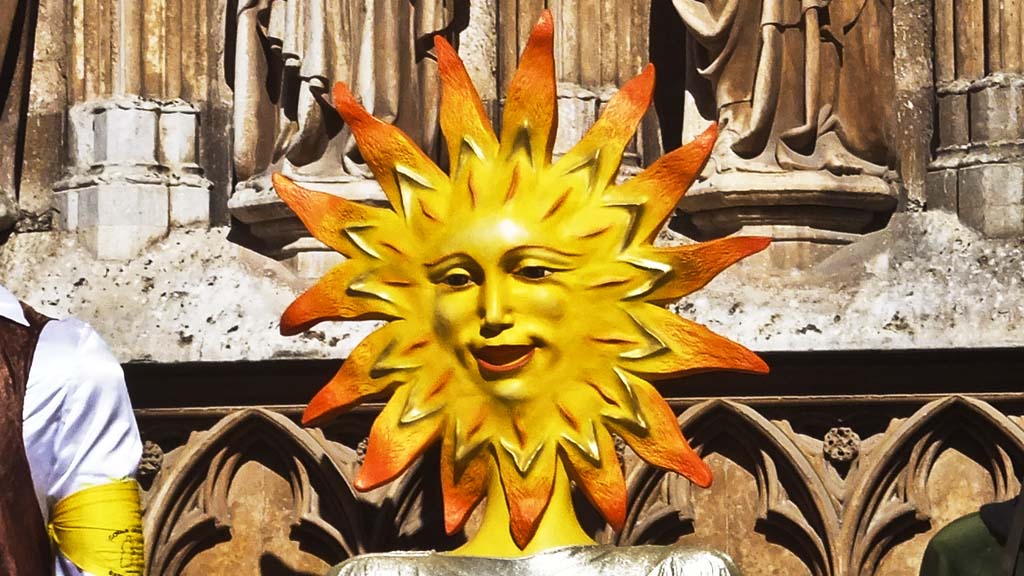
Spain’s city of Tarragona has always been the lesser-known cousin of its famous Catalan neighbor Barcelona. But the historic port has been working hard to claim its own fame, opening a new cruise terminal capable of welcoming four ships at once.
The narrow street reverberates with the sound of a hundred drums and a chorus of horns. A giant wooden horse charges through the crowd.
Then three-story high figures of a king and the queen come into view, surrounded by tiny characters that seem to be inspired by Munchkins or bad LSD trips.
And that’s just the start of the parade dedicated to patron saint Santa Tecla in Tarragona, Spain. It was an unexpected treat in an unexpected port on our voyage aboard Oceania Riviera.
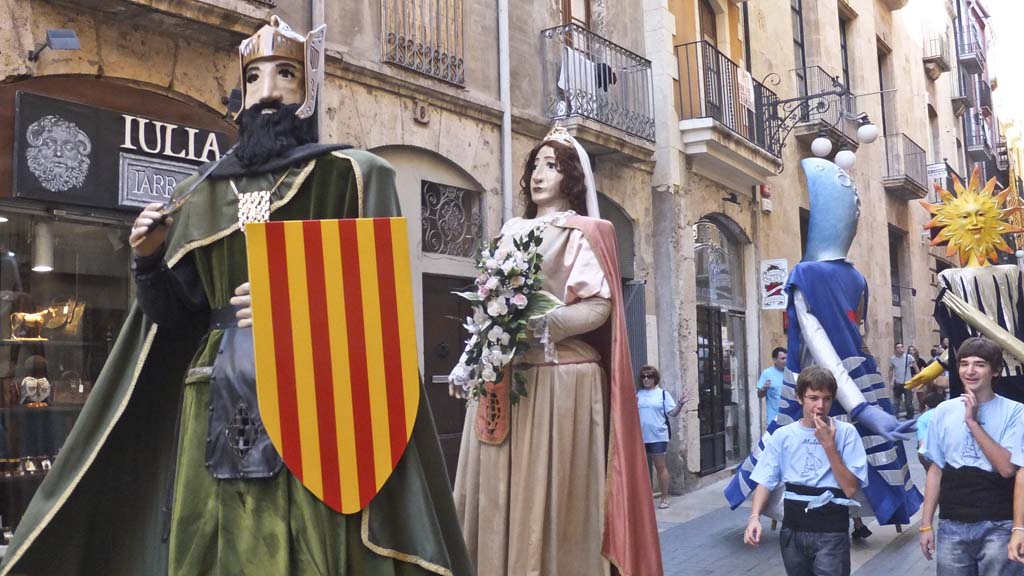
Tarragona wasn’t even on my radar on this cruise around Spain. On the itinerary for Riviera’s port stop, the destination read Barcelona (Tarragona) and though I’ve been to Barcelona many times I was looking forward to rambling on the famed Ramblas and maybe having a tapas lunch. But checking the map, I found our port of Tarragona is a full hour’s train ride south of Barcelona.
It’s a place that few cruise ships have visited in the past because it’s been overshadowed by the famous city of Gaudi and Olympics fame. But you’ll be hearing lots more about Tarragona, since it added a new cruise dock (expanded to four berths in 2020) and is trying to lure ships that are finding it more difficult and expensive to find a docking place in popular Barcelona. Oceania Cruises was offering it for the first time on this cruise of Riviera.
I found this Catalan sister city has a lot to offer those who already know Barcelona.
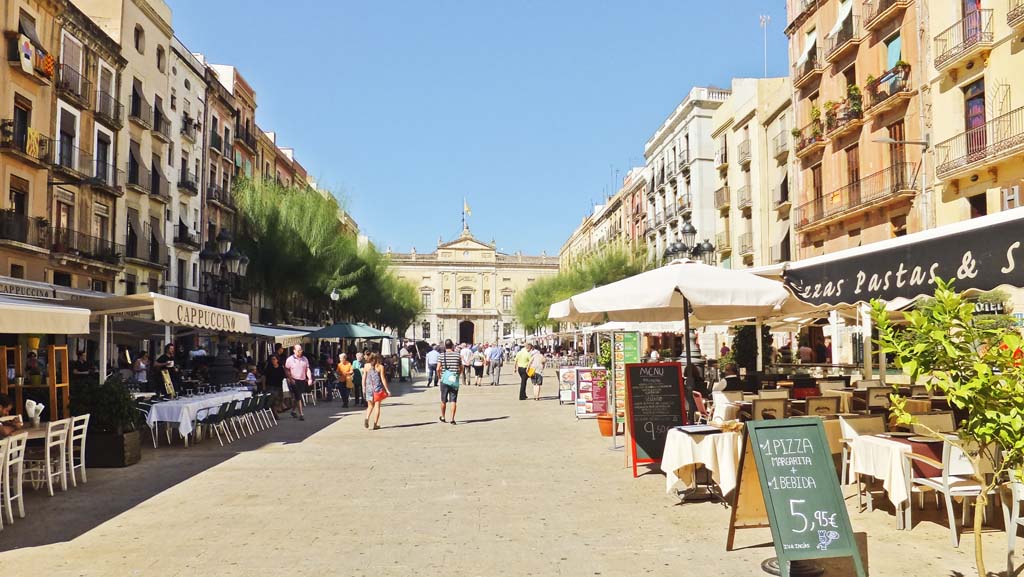
The city feels very Italian. The menus offer cappuccinos and pizzas and calamari, which is understandable, since this was a thriving Roman city in the heyday of the Caesars. In fact much of the old Roman city still stands intact. A vast amphitheater that was built in the second century AD is still fairly complete. A hippodrome—the Tarragona Circus that seated up to 25,000 people– is now only partly visible because later generations used the enormous stones that made up the foundations as the underpinnings of more modern buildings.
The emperor Augustus Caesar used to spend winters in Tarragona and set up gladiatorial contests as an amusement. The remains of the amphitheater have a spectacular view of the inky blue Mediterranean that here features a sweeping sand beach. It’s open to the public and you can wander through the tunnels where gladiators used to get ready for matches.
But as early as 259 AD, Tarragona was becoming a Christian center. By the twelfth century there was major church dedicated to Santa Tecla—whose route to sainthood included being converted by Saint Paul and subsequently being persecuted by the pagans of the era, but repeatedly being saved by divine interventions.
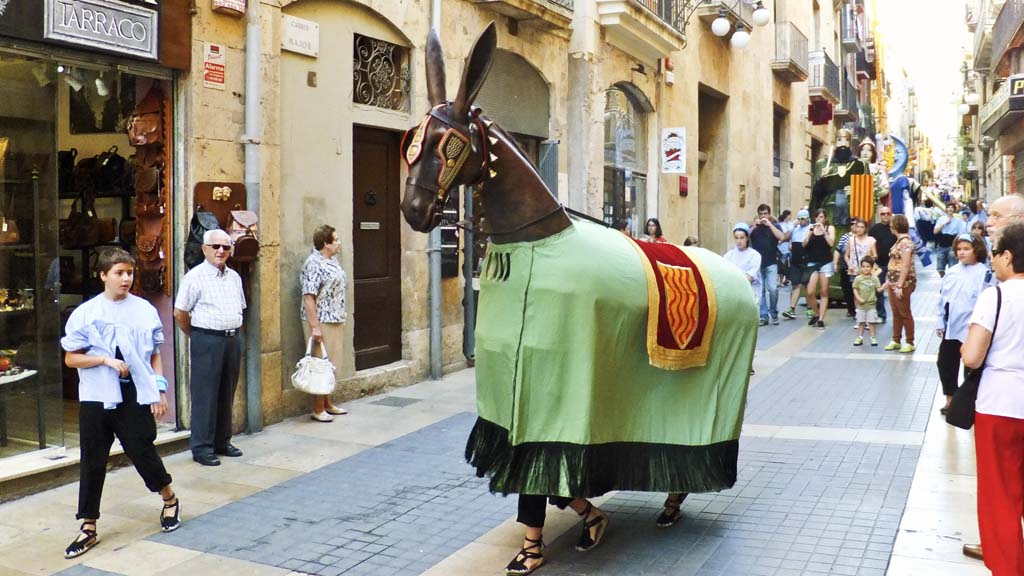
That’s where the parade of giants fits in.
A group of about a dozen figures that are larger-than-life– actually about four times larger—with paper mache heads and gorgeous costumes are kept secure in a museum most of the year, but are broken out for the Gegants Moros parades honoring the saint. The tradition may go back earlier than the Christian era because it has a kind of pagan influence.
The story involves the sun, a figure with a glowing orange face and another figure representing the blue-faced crescent moon.
Then there are the Queen and King, followed by figures of a blonde-haired maiden and a strong young lad. And there are other figures that represent princes and knights and towns people.
Each puppet is a three-story tall structure held up by a single person who at certain points has to twirl or do dance moves as a rhythmic beat provided by horns and drummers builds in tempo. It must be a real workout because the parade winds for many blocks of the town’s narrow cobblestoned streets from the Cathedral of Santa Tecla and back again, where the parishioners in full Sunday best gather to admire them.
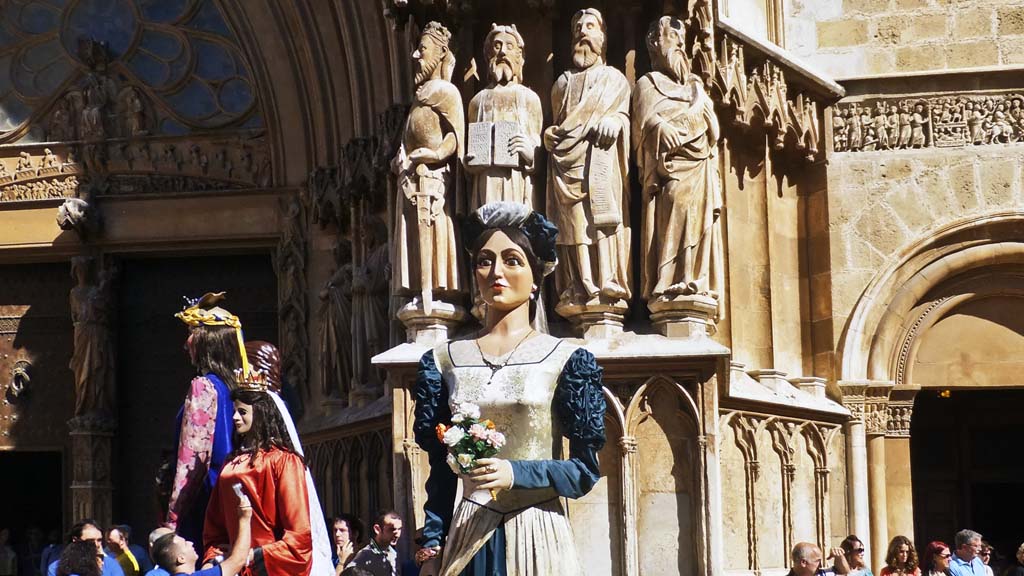
They stand just like big statues–Photo by Wallace Immen
I was fascinated by the swirling colorful scene and so were the children who crowded around the giant figures and rubbed the nose of the wooden horse for luck.
After the parade, I found that Tarragona has another attraction on Sunday. While many stores are closed for the day in Barcelona, the stores in Tarragona’s main business district were open on Sunday, offering arrays of jewelry, housewares and gourmet treats.
All in all, it was a very rewarding day.
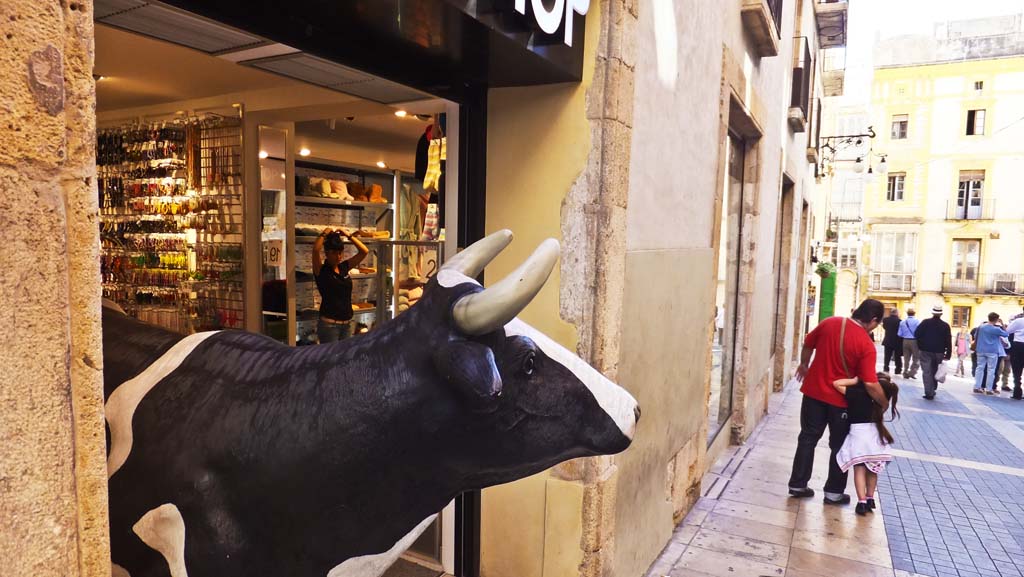

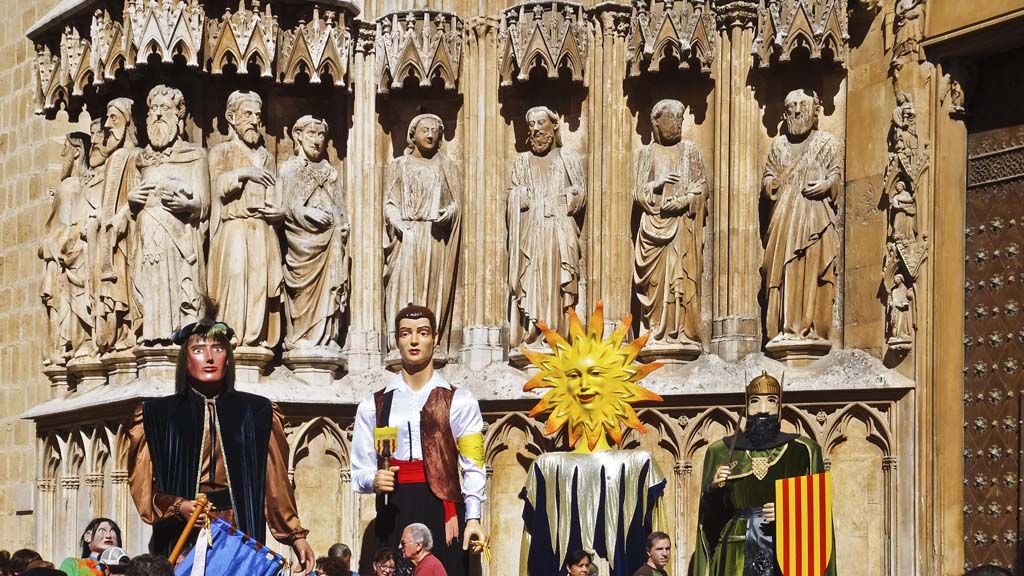
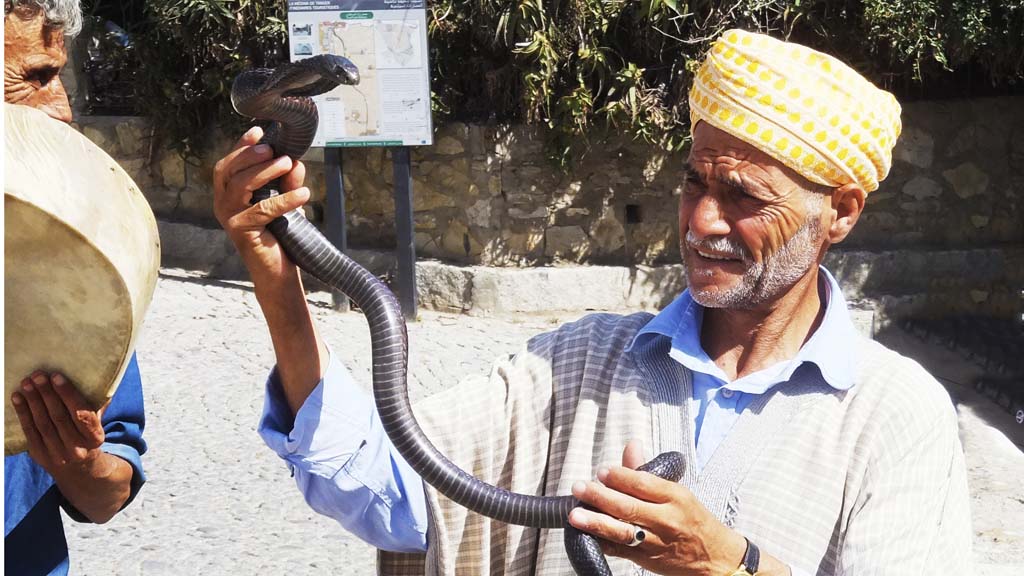
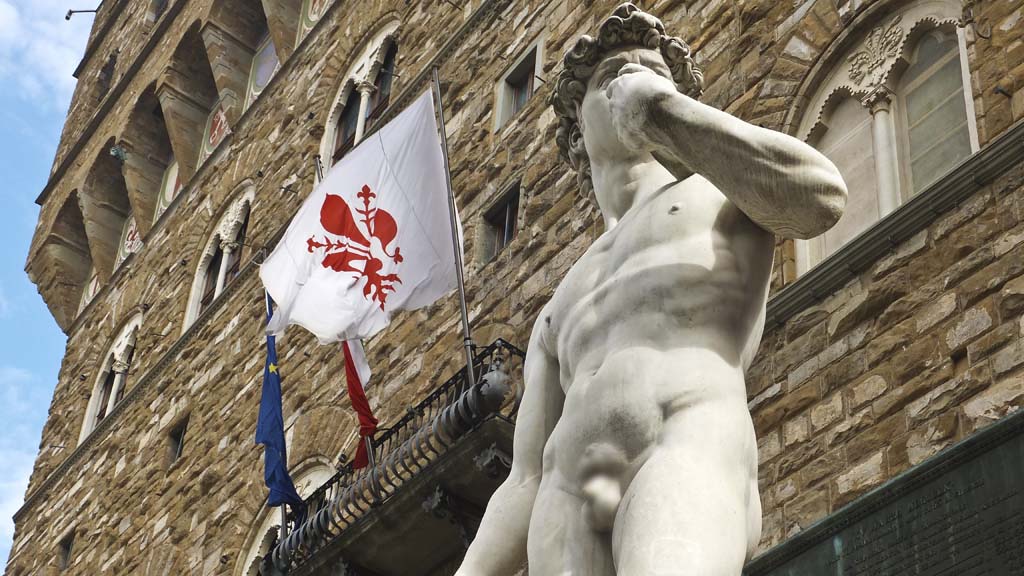
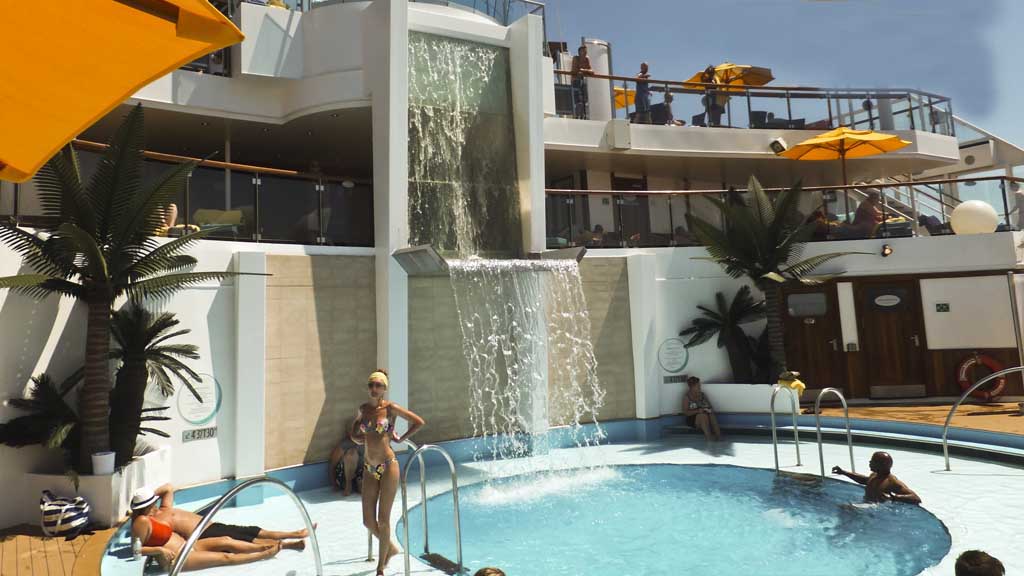
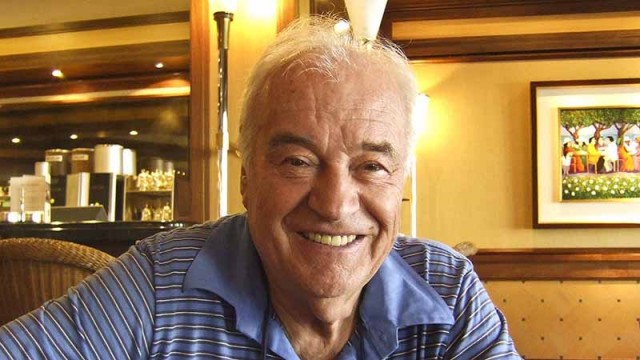

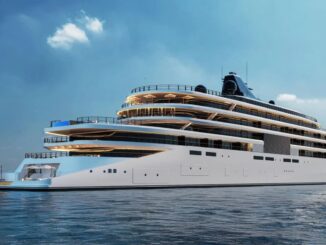
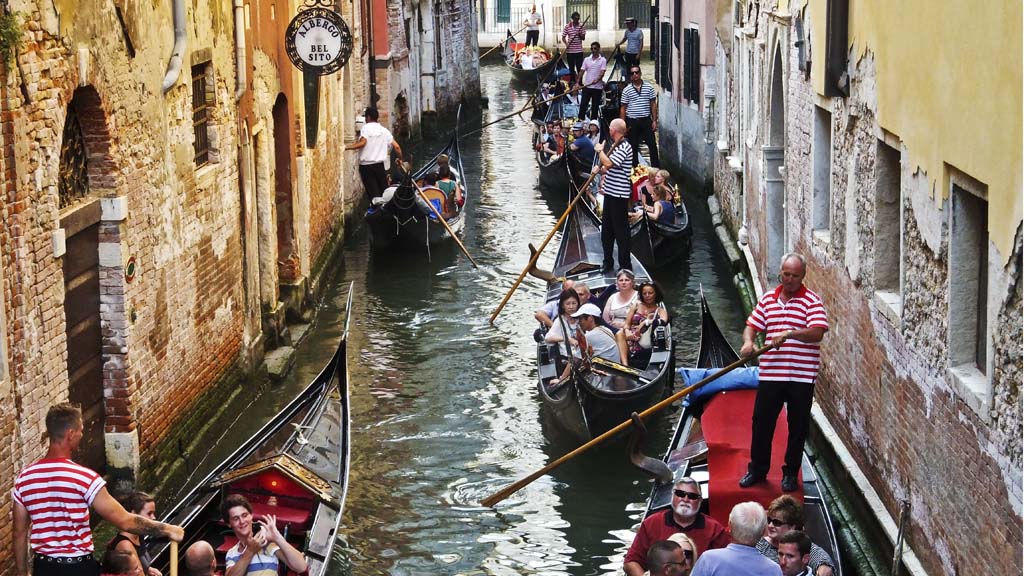
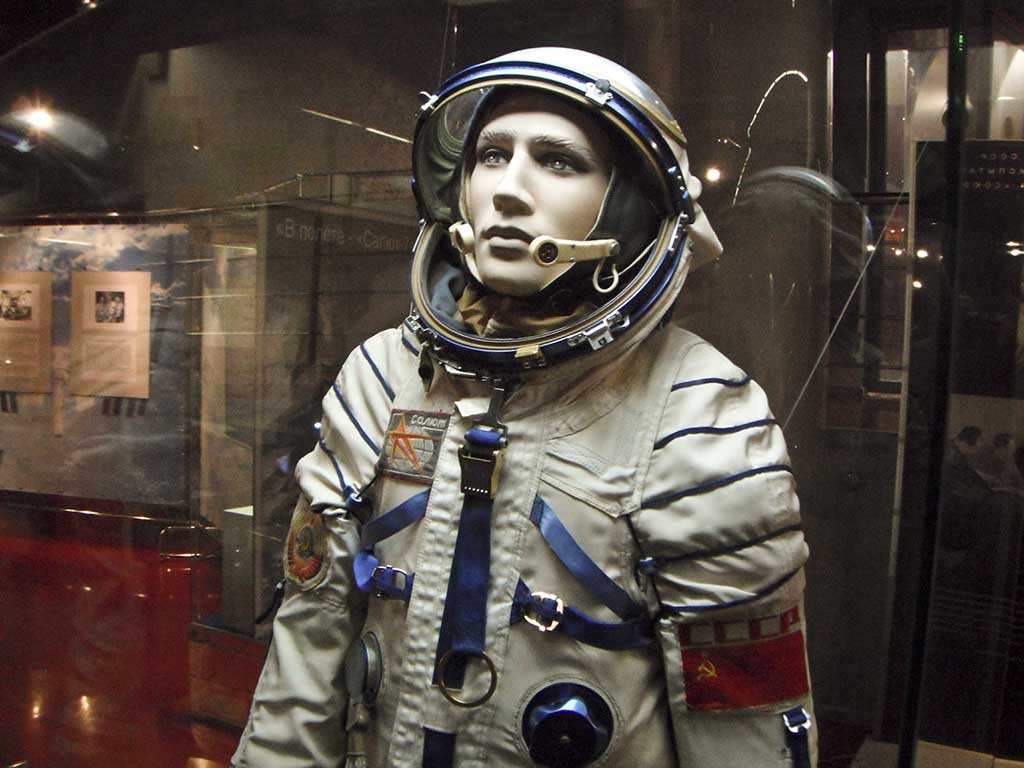
I loved the article. I hope Taragonna retains its unique character and culture in spite of the influence of the outside world.